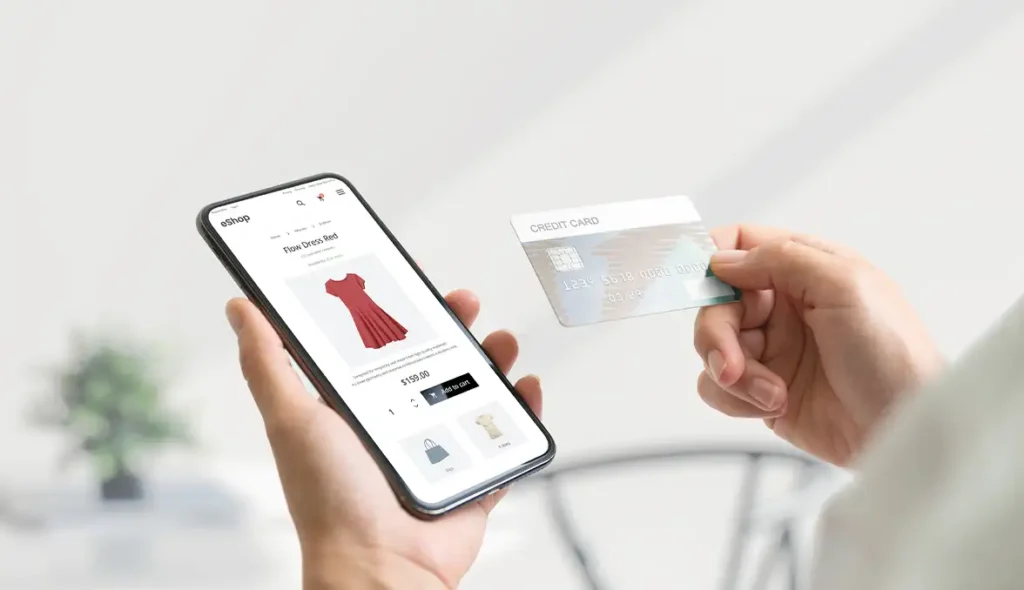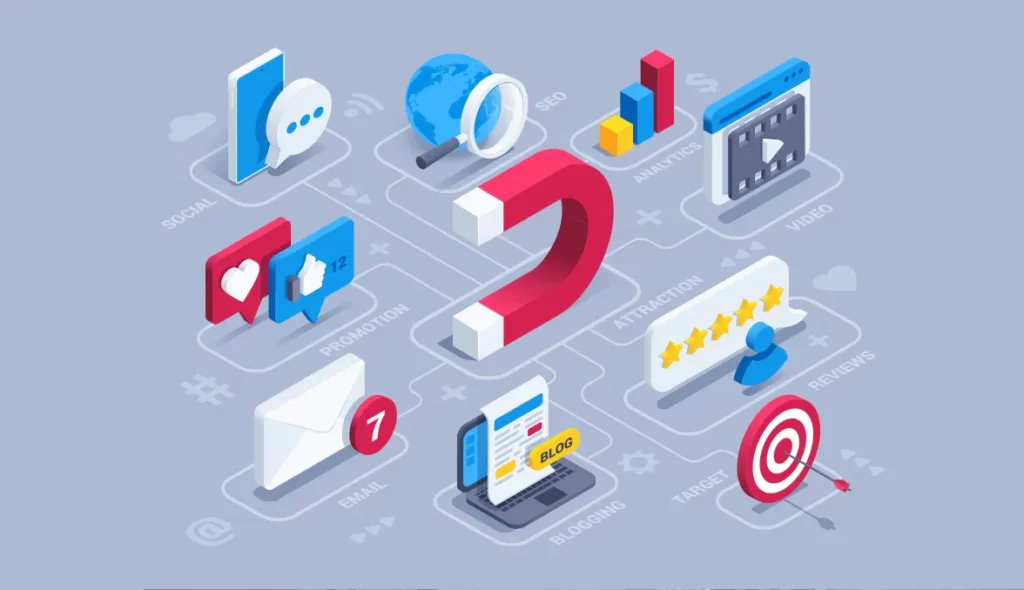In this article, you’ll discover how data-driven web design can transform your website into a strategic tool: not only more effective from a visual point of view, but also optimized for conversions, SEO and user experience.
We’ll delve into how data analysis guides every design choice, which tools to use, and why even small businesses can benefit greatly from it.
If you want to make informed decisions based on real evidence, you’re in the right place.
What is data-driven web design
Data-driven web design is a strategic approach that puts data at the center of the creative process. The goal is not only to create an aesthetically pleasing site, but to build an effective, personalized and results-oriented digital experience.
Every design decision – from visual layout, to content, to navigation paths – is guided by metrics and analysis.
Observing user behavior allows you to adapt design and content in an increasingly targeted way, favoring the personalization of the experience and the achievement of business objectives, such as increasing conversions and loyalty.
Every element of the interface – layout, copy, call to action, information architecture – is defined on the basis of quantitative and qualitative insights.
User behavioral analysis (e.g. heatmap, session recording, funnel analysis) allows you to identify usage patterns, bottlenecks and improvement opportunities, thus guiding informed and measurable decisions. This approach supports dynamic content personalization, increases perceived relevance and improves the conversion rate.
In short, design is no longer just an aesthetic issue, but a functional tool for continuous optimization, oriented to achieving specific KPIs.
Why adopt a data-driven approach in web design
Opting for a data-driven web design means designing with a more solid and strategic vision. Decisions are no longer based only on aesthetics or intuition, but on concrete evidence. This approach allows you to:
- Improve site performance, thanks to choices based on real user behavior.
- Eliminate uncertainty, because each change is supported by numbers, not by assumptions.
- Encourage continuous improvement, with iterative testing and optimization.
- Focus on the user, thanks to data collected by tools such as heatmaps, funnels and session replays.
How data-driven web design works
The process is developed in different phases, each of which has a specific role in the creation of a high-performance site:
- Data collection: we start by monitoring user behavior with tools such as Google Analytics, Hotjar, HubSpot and corporate CRM.
- Behavioral analysis: we observe the site’s critical points and areas of strength. Where do users abandon? Which pages generate the most interactions?
- Action planning: based on data, structure, content and call to action are redefined to improve results.
- Implementation and testing: changes and A/B tests are performed to compare versions and choose the most effective one.
- Continuous optimization: the site evolves over time, adapting to new needs and maintaining high performance.
Data-driven web design and SEO: a winning combination
Integrating a data-driven approach to web design means not only improving the user experience, but also significantly boosting the organic visibility of the site.
When design decisions are based on data, every element of the site – from the structure to the content choices – works in synergy to promote both conversion and indexing.
Here’s how data-driven design boosts SEO:
- Site structure optimization: By analyzing user behavior and page performance, you can build a logical content hierarchy, with clean URLs, consistent titles, and a site map that is easily interpretable by crawlers.
- Reduction of bounce rate: Understanding search intent allows you to offer relevant, up-to-date content that meets user expectations, increasing dwell time and reducing bounce rates, which are positive signals for search engines.
- Fluid navigation and effective internal linking: Interaction data reveals which navigation paths work best. This allows you to optimize internal links, distribute page authority strategically and guide the user towards key content.
- Identification and valorization of high-performance keywords: By monitoring search queries and organic traffic metrics, it is possible to identify the most effective keywords and integrate them into the design through headers, microcopy, visible texts and structural elements such as menus and breadcrumbs.
A data-driven design not only makes the site more intuitive and engaging, but also aligns it perfectly with SEO logic, improving its ability to position itself on search engines and attract qualified traffic.
UX/UI considerations from a data-driven perspective
The data-driven approach is also essential for optimizing UX/UI aspects, as it allows you to make design decisions based on real evidence rather than hypotheses.
By analyzing the data collected from user interaction with the site, it is possible to intervene in a targeted way to improve usability, usability and engagement.
Among the key elements:
- Data-informed visual hierarchy: The use of tools such as heatmaps, click tracking and eye-tracking allows you to understand where users’ attention is concentrated. This information guides the arrangement of content and visual balance, to facilitate reading and direct the gaze towards strategic elements.
- Micro-interactions designed to convert: Animated elements, visual feedback and contextual interactions are designed and optimized by analyzing the points where the user interacts most. If well calibrated, these micro-interactions increase the level of engagement and improve the overall experience.
- Mobile-first approach based on real data: Traffic analysis highlights the growing prevalence of accesses from mobile devices. This justifies a mobile-first design not only in terms of layout, but also in terms of performance, touch navigation and loading speed.
- Simplified and action-oriented experience: Navigation data helps identify friction and superfluous steps. Optimizing forms, CTAs and conversion funnels means making the experience smoother, eliminating obstacles and guiding the user intuitively towards the goal.
The analysis of real behaviors allows UX/UI design to evolve from a creative process to an iterative, measurable and performance-oriented system
Practical example: from a showcase site to a performing site
A client company started from a static showcase site, not very conversion-oriented and misaligned with the real needs of its audience.
The initial analysis, based on behavioral data and analytics insights, highlighted significant critical issues: homepage with a high exit rate, forms that were not very visible and rarely filled out, generic content that did not intercept search intentions.
The turning point came with a complete redesign, guided by a data-driven approach and the definition of precise buyer personas.
By understanding the needs, motivations and behaviors of the different audience segments it was possible to:
- redefine navigation paths in a more intuitive way;
- rewrite content with an SEO perspective and with a tone suitable for each target;
- strengthen calls to action in the points with the highest conversion.
The results were tangible: +48% in average time on page, +32% clicks on CTAs and a 56% increase in requests via forms.
A concrete example of how data, if well interpreted, can transform a site into a business tool.
The data-driven approach to web design (data-driven) has demonstrated its effectiveness in numerous contexts, available online. The Winnow case is well known.
As reported by Hubspot, the company Winnow, through a combined strategy of website redesign and inbound marketing based on concrete data, has obtained decidedly notable results:
- 18x increase in the number of leads coming from organic traffic.
- 10x increase in overall traffic on the site.
- The landing pages created recorded an average conversion rate of 45%.
If you don’t know HubSpot yet, Kiosk can help you learn about this platform.
Frequently Asked Questions (FAQ)
Is data-driven web design only suitable for large companies?
Absolutely not. Data-driven web design is a strategic tool also – and above all – for small and medium-sized businesses. When the budget is limited, every decision must be targeted: adopting a data-driven approach allows you to avoid waste, test what works and maximize the return on each investment. Even a small site can obtain great benefits if designed based on real metrics and user behavior.
Do you need expensive tools to apply it?
No, not necessarily. There are free tools or very high-performance basic versions that allow you to collect and interpret data effectively. Among these, Google Analytics and Google Search Console provide valuable insights into traffic, access sources and page performance.
Hotjar allows you to visualize user behavior through heatmaps and session recordings. Even A/B testing tools like Google Optimize (until recently) or low-cost tools can be useful. In many cases, the most important investment is the time and skills to read the data correctly.
How often should analytics be updated?
The ideal frequency depends on several factors, including traffic volume, business seasonality, and site complexity. However, a good practice is to monitor key data – such as traffic, conversion rate, user behavior – at least once a month.
For more strategic reviews, such as buyer persona analysis or funnel optimization, it is advisable to do a thorough check every quarter. The important thing is to maintain a continuous cycle of observation, testing, and improvement.
Can data-driven design limit creative design?
Not at all. A data-driven approach does not limit creativity, but directs it strategically. Data does not say how a design should be done, but what works best for the user and for business objectives.
This allows creative design to express itself within more effective guidelines, avoiding purely aesthetic choices that do not bring results.
In practice, creativity is not sacrificed, but enhanced: it can focus on visual solutions that excite, involve and convert, starting from what the data suggests is most relevant.
It is the combination of inspiration and information that makes a project truly successful.
Conclusion
Data-driven web design is not just a technique, but a design philosophy that puts the user and the results at the center. It is the meeting point between analysis, creativity and digital strategy.
If you already have a website online, now is the right time to ask yourself: are your choices supported by data?
 | Do you already have a site?Do you want to find out how to make it more performant with a data-driven approach? |
 |
Do you already have a site?You want to find out how to make it more efficient with a data-driven approach?
|



